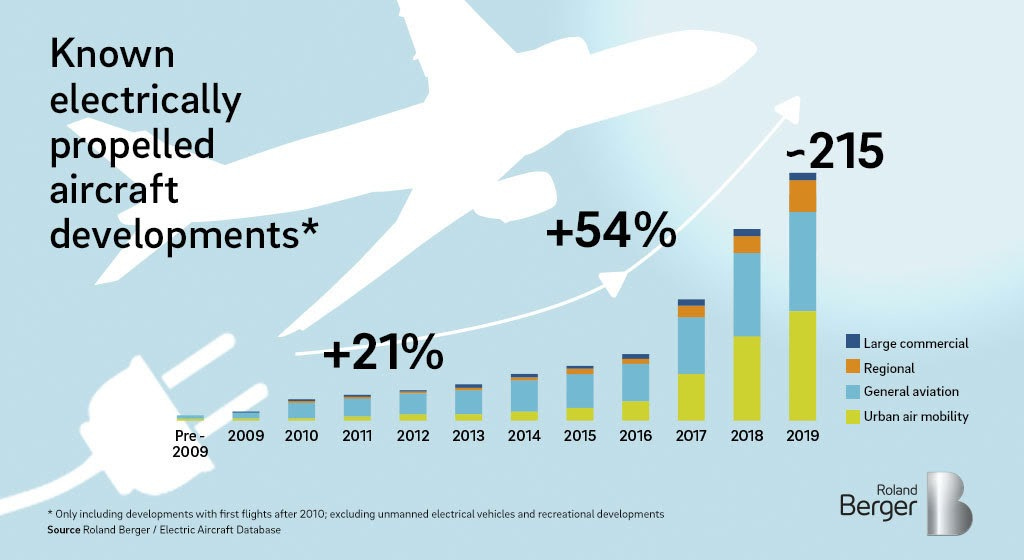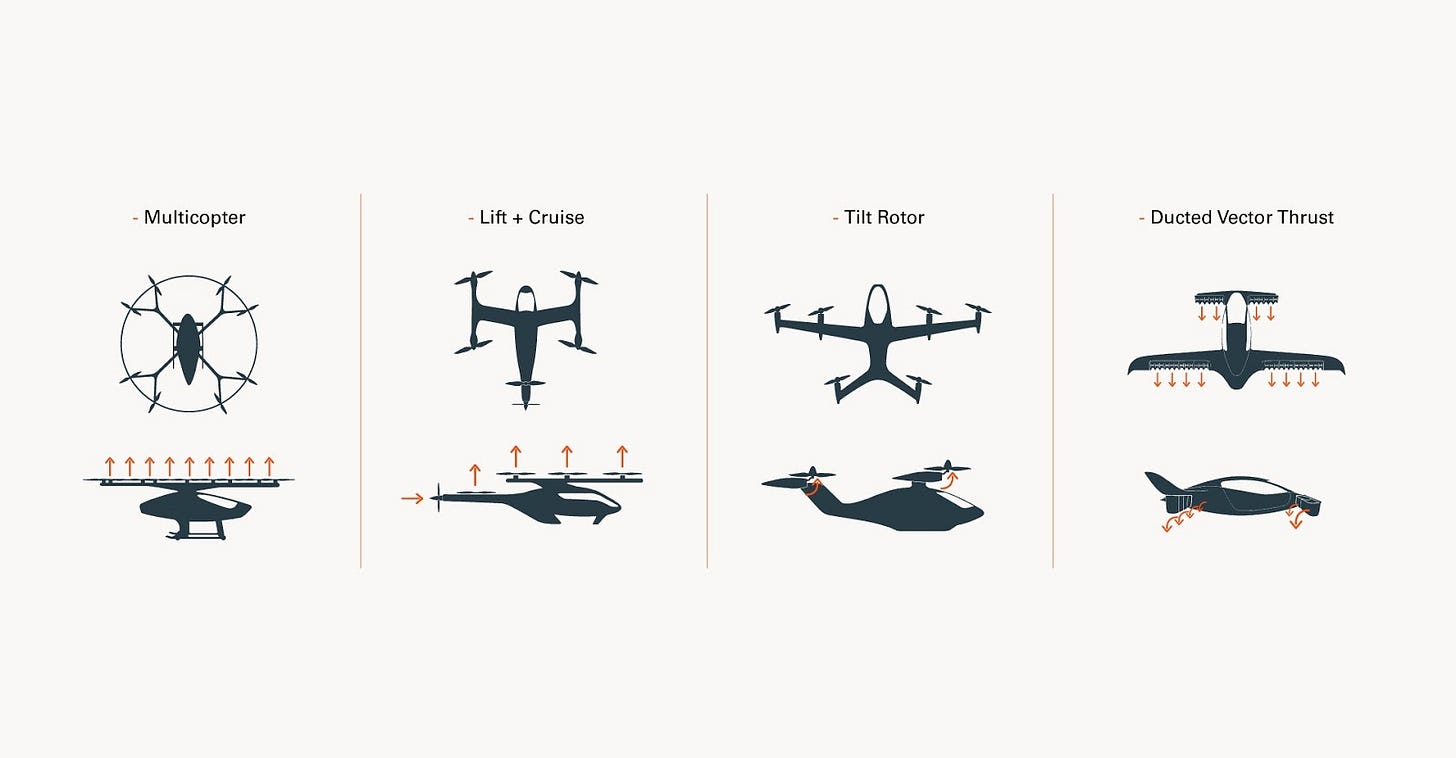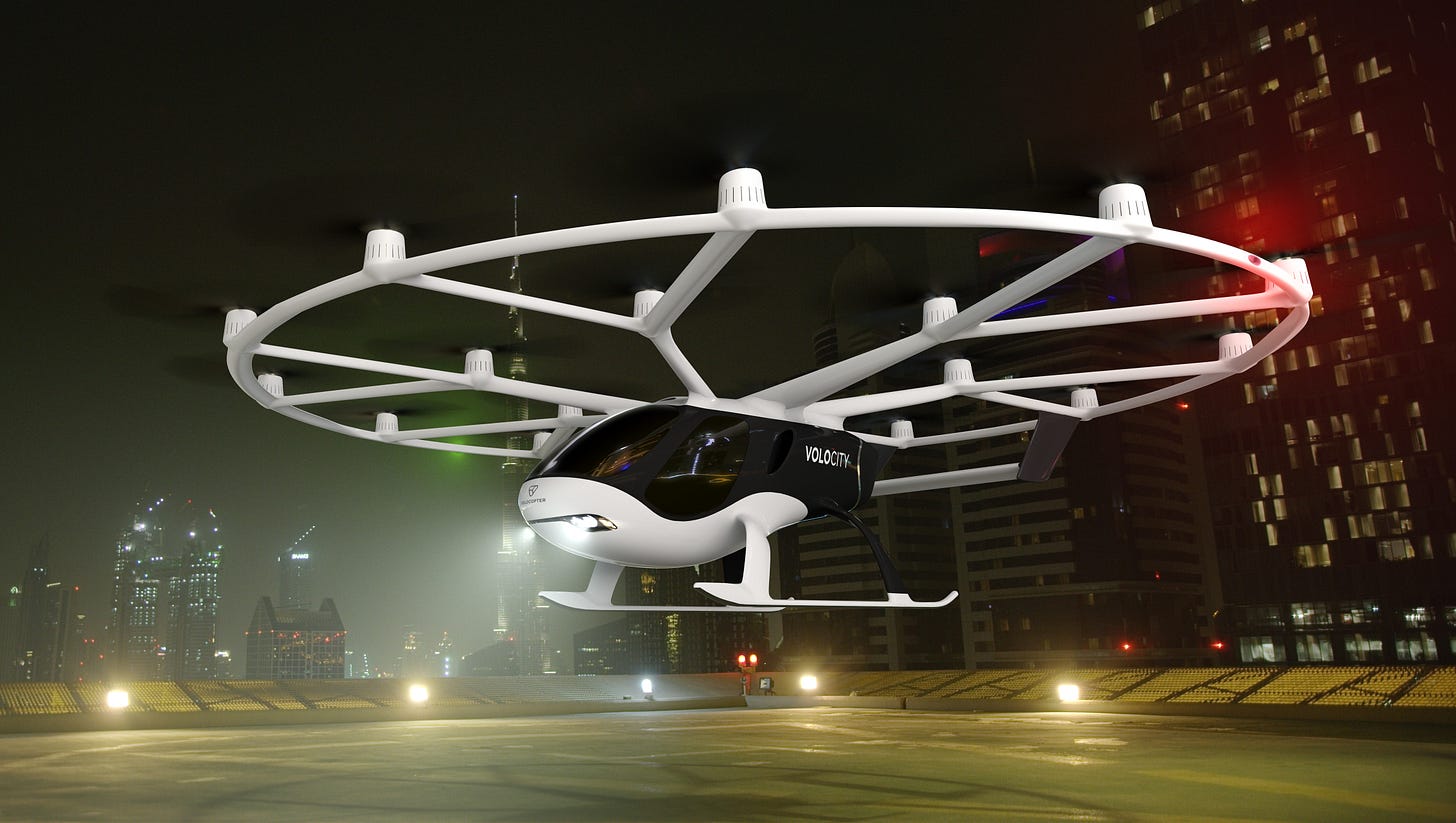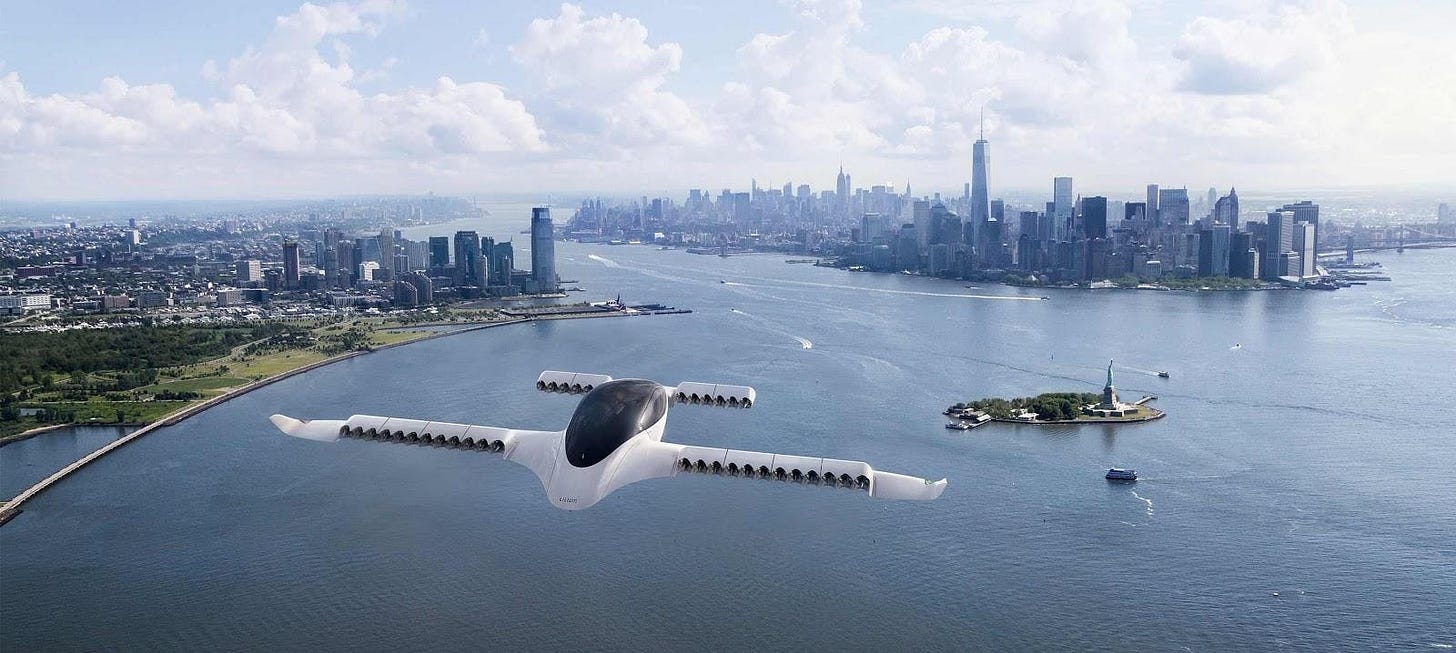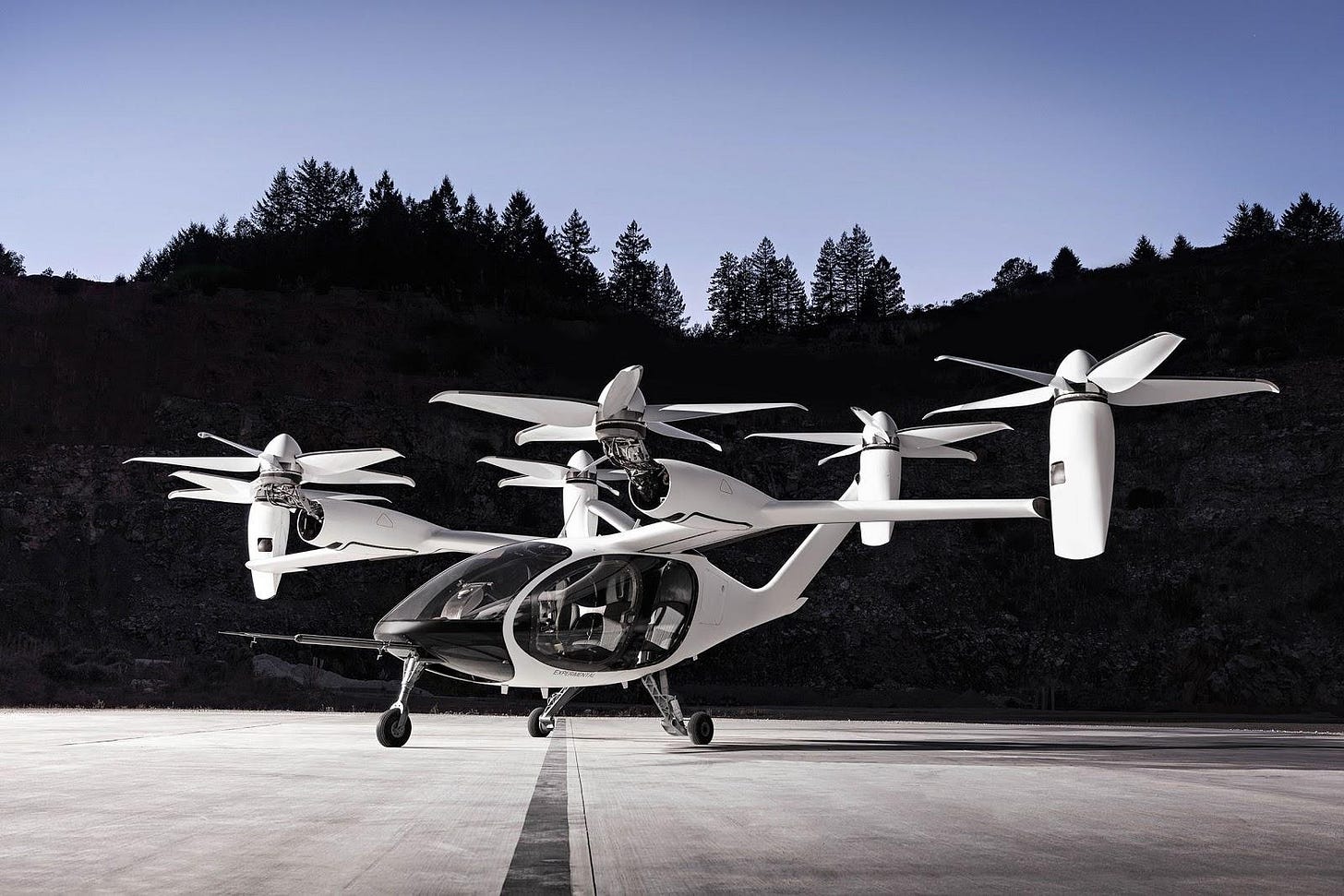Transportation: Urban Air Mobility and Flying Cars
For video format, follow the link here.
In Where Is My Flying Car?: A Memoir of Future Past, Hall asks where are the flying cars that were promised in the 60s and narrates the history of projects that aimed to build flying cars. 6 decades hence, we might be at the cusp of a new transformation.
For most of human history, legs were the primary mode of transportation. Limited by time, speed and energy, it took a long while for humans to venture beyond Africa. Historically, the ease of moving to desired destinations has enabled humans to utilize time and resources to build something that could be passed onto future generations. As soon as rafts (dating 10,000 BC) and wheels (dating 3,500 BC) were invented, the ability to share ideas back and forth across frontiers became easier and thus innovation became prominent. People began moving around faster and establishing new settlements.
From the design of a medieval castle to ancient Rome to the modern city of Paris, Bloomberg CityLab argues that the shape and distribution of a city have been defined by the technology to commute. In ancient Rome, the radius of a city was not more than a km - the walkable distance in 30 minutes. With the introduction of rail transportation in the 1800s, the upper-middle class in London could live on city outskirts further away from work but closer to the station and the really rich could live in estates that were connected by rail coaches. And with cars becoming a common commodity since the late 1900s, staying at a place 45 minutes away by a car ride in Bangalore or San Francisco isn’t unusual.
Credits: Bloomberg City Lab
However, with increasing density, traffic congestion and inexorably slowing commute speeds, an alternate mode of transportation and thereby, new designs for future cities is a must. Beyond the era of Uber and Lyft, Autonomous Cars, Hyperloop/Boring and Air Taxis/eVTOL(electric Vertical TakeOff and Landing) are the technologies that can fundamentally transform the way we commute. As much as multi-storey buildings and skyscrapers enabled cities to accommodate more people, a 3D transportation system - Airspace or underground tunnels - will enable faster mobility within cities.
The goal of air taxi companies is to link urban centers with suburbs while leapfrogging traffic — air taxis could cruise at 300 kmph at altitudes of around 500m to 1500m. A confluence of technologies - including but not limited to autonomous vehicles such as drones and self-driving cars, more efficient batteries and advanced manufacturing techniques, processing and computing power, and advanced composite systems - drive the trend for the eVTOL market. There are more than 200 projects currently on the pipeline to develop electrically-propelled aircrafts.
eVTOL technology will induce high infrastructure cost but on the upside, it has the potential to drastically cut down on environmental emissions and noise pollution. More than 20% of all carbon emissions are caused by transportation. eVTOL can lead the way towards a sustainable future. While it may be intuitive to feel that flying is an expensive and infrequent form of travel, it has been largely due to low production and lack of sustained innovation in product and service. Based on the current growth, technology has the potential to break the power of city hubs and distribute economic growth. As eVTOL technology develops, the opportunity to shape urban landscapes to build a better society may lie within reach.
The biggest and currently funded-in-billions-yet-underfunded market opportunity is the eVTOL jet, either by startups or through corporate partnerships. Most startups have already gone past the early-stage investment rounds, although even prototypes are still only in production stages.
While first movers will likely be either startups like Lilium or Volocopter, Airbus and Boeing may be just right behind to catch the wave.
Technical Landscape:
The jet engine that once revolutionized transportation has been replaced by the steady (and rather expensive) evolution of that same technology over the last 70 years. Electric Vertical Take-Off and Landing (eVTOL) technology is hailed to be the paradigm-changing technology in air transport. The technical aspects of the technology should cater to 5 degrees of freedom - speed, range, payload, noise and safety.
As compared to the traditional aircraft design, eVTOL designs should account for these freedoms while also inherently including vertical take-off and landing operations.
One key factor in designing eVTOL aircraft is Disc loading: the ratio of its weight to the total main rotor disc area. Higher Disk load means greater engine power required and substantial noise created. The reason why helicopters are inefficient and noisy.
I. Design Architecture
There are 4 different design architectures:
Multicopter designs are relatively simple, very efficient during vertical take-off, landing and hovering due to low disc load. However, as there are no wings, multicopters lack cruise efficiency and have limited flight speeds. Additionally, more battery is required to compensate the inefficiency during cruise flight, adding to overall aircraft weight. Volocopter is an example of a startup that uses this design.
Lift and cruise designs combine the advantages of the multicopter for vertical take-off and landing operation with a standard aircraft for cruise flight. The current designs, however, use fewer blades and short chords to reduce drag during cruise flight. Subsequently, the open rotors in design create substantial noise due to the resulting higher disc-load and blade tip speeds. Kittyhawk incorporates this design.
Tilt wing and rotor designs apply slow rotation of open multi-blades to provide high range and low noise mitigating the disadvantages of the other two designs. However, this design is complex and requires a heavy propulsion system that is tilted. The design due to its complexity also requires greater effort for flight controls. Joby Aviation is a key player using this design.
Various eVTOL architecture standards, with the orange arrows indicating the direction of thrust generated. Credit: Lilium
Lilium, although uses a tilted propellant design, it implements ducted fans in form of Distributed Electric Propulsion in the rear of four lifting wings. By breaking down larger, single-stage open propulsion systems into 36 smaller ducted fans, Lilium claims the design helps reach higher aerodynamic and engine efficiencies, while the ducts are also used to implement acoustic liners and thus reduces noise.
II. Infrastructure:
Change has a quantifiable impact only when it is adopted by everyone and this means setting up infrastructure across the world to create the ecosystem necessary for UAM to exist. This involves airports, trained personnel, air traffic control systems adapted to cities, ground logistics, etc. Naturally, this is a monumental project but one that has already started in some places and will soon start in others. For now, though, we have only just arrived at the starting blocks.
Building landing spots for eVTOL jets will be a critical infrastructure challenge. The solution could be either building an extensive, distributed network of “vertiports” (VTOL hubs with multiple takeoff and landing pads, as well as charging infrastructure) or single-aircraft “vertistops” (a single VTOL pad with minimal infrastructure). Neither should the infrastructure mimic the airport structure(and thus not solve the commute to airport problem) nor take up too much space within the city limits.
The plans of Lilium, Transcend Air Corporation and Joby Aviation are modular in design for three-part structures (landing pad, parking bays and terminal) so that they can be arranged and scaled to purpose and space.
Credit: Lilium
III. Onboard battery technology:
Battery swapping is all well and good but Li-ion batteries have a dirty secret. Lithium extraction is polluting and like any mining process, it scars the landscape, destroys the water table and pollutes the earth. When this is taken into account and the massive demand for batteries that the success of the above projects will fuel suddenly the "green" solution does not seem "green" at all. Geothermal Lithium solutions sound promising and might have zero environmental impact.
Early eVTOL jets may certainly fly well with electricity from Li-ion batteries but they cannot be considered an end-all solution. Advances in battery technology are the next big step towards validating the shift to UAM and this is something recognized by other players in the electric transport domain. Tesla is quietly acquiring multiple battery companies for instance.
While significant advancements continue to be made in lithium-ion battery power, storage density and cycle life, battery cells ideal for electric cars don’t match the usage profile of eVTOL aircraft. This might create a demand-supply shortage with an increase in aircraft production.
IV. Regulations:
Certification plays a major role in this domain. Unlike other means of travel (road, civil aviation etc), UAM is a new domain where the advances in technology had caught regulators unaware and they are now scrambling to catch up. Certification means safety and that is naturally a key component that manufacturers will look to address. Most manufacturers for instance have their products fitted with ballistic parachutes capable of ensuring a controlled descent should something unforeseen occur to their aircraft.
Having a multi-motor configuration aids with redundancy and therefore increases safety by avoiding single-point failures. Nevertheless, certification is necessary to establish a framework and standards that everyone can adhere to thereby assuring the general public that they are boarding a means of transport that is at least as safe or more than any other in use.
Market Landscape:
Of all the UAM pioneers the following companies are the ones closest to being commercialized.
Volocopter
The Karlsruhe based German startup is currently designing electric multirotor aircraft that is capable of vertical takeoff and landing with a focus on travel within cities. This focus is something that sets them apart from the other companies and is characterized by the aircraft's range of ~27 km with a maximum speed of 110 km/hr.
Power comes from multiple battery packs that are swappable. Why is this important? One of the major criticisms on electrically powered vehicles, be it aircraft or cars, is that they take too long to charge up between uses. Swapping allows for the user to just replace the used batteries with freshly charged ones and recharge the used ones in the meantime. The Volocopter uses Lithium-ion batteries (currently the industry norm across domains like in Tesla). These battery packs power 18 microprocessor-controlled rotors that can silently carry 2 passengers and their baggage (total weight of 200kg, so watch your diet) across the city. Just in case you were wondering, there are more than a 100 microprocessors so they haven't been cheap on that front.
What makes Volocopter really special though is how far they have already come with this vision of theirs. While competitors are still testing their aircraft, Volocopter has moved on to testing their own "Vertiports" to simulate logistics and passenger handling. They have made more than a 1000 test flights already and currently have agreements with cities like Dubai, Helsinki and Singapore to perform manned and unmanned test flights. They are so far ahead in the game that they are even involved with defining regulations in this "to be regulated" domain. This is of particular importance since the regulations are likely to be the single biggest braking factor in the world of UAM simply because it is such a grey zone.
One thing is clear. Volocopter, which might have chosen to limit its current ambitions to intra-city travel but has other projects on the horizon including drone-based cargo deliveries, is a name to watch in the coming days.
Lilium
Another German startup from not far away has its sights set on slightly larger goals. The Lilium jet is designed to provide regional level mobility solutions (city center to city center for instance). For enthusiasts that equates to a range of about 300km with a maximum speed of about 400 km/hr for 5 people (1 pilot and 4 pax) and their luggage.
In true mathematical sense, since the Lilium Jet has twice the range and about thrice the speed (ignore this for the aforementioned mathematics), it also uses twice the motors (36). The Lilium Jet has set up the 36 motors on two wing-shaped structures in such a way that they can be oriented like rocket pods based on the flight phase. They can be oriented vertically for takeoff and landing and can transition to a horizontal setup for level flight (thrust vectoring for those who read too many science books). Lilium claims that this setup is more efficient than the philosophy that rotorcraft use to transition from vertical to level flight but number-crunchers might want to wait since Lilium is yet to prove these claims.
Lilium has announced that they will use off the shelf battery technology which can therefore be construed as Li-ion cells since there is no other commercialized battery technology at the moment. So far so good. Now however we must come to the slightly worrisome bits concerning Lilium's project. So far they have had one prototype catch fire due to a maintenance problem. Another and slightly bigger problem is the fact that Lilium envisages operation of its jets from city centre "airports'' allowing VTOL but it does not appear to have a well-defined program like Volocopter's Vertiports. That being said, the magnitude of operation is not the same and therefore Lilium may be more at the mercy of regulations at a state level than at a city level. As in, California for example was an early adopter of electricity as a fuel and was able to mount infrastructure much quicker than other American cities despite being in the same country. See what we’re getting at?
Nevertheless, despite a few unanswered questions, Lilium does have a project that is more than just a viable idea that is appealing to the general public given its 5 person capacity. In densely populated zones of developed parts of the world (Europe or the coasts of the US) it could supersede high-speed rail and low-cost jets provided that the costs remain accessible. For these reasons, we would keep an eye on its evolution and the evolution of regulations in UAM in different countries around the world.
Joby Aviation
From the other side of the pond, one name recently made a big splash in the UAM domain. Joby aviation recently acquired Uber's Elevate (Ubers take on UAM involving quite a bit of investment) and have now positioned themselves quite strongly at the helm of the UAM wave. If it hadn't been for this acquisition, Elevate would have been the title of this subsection since they have been involved from 2016 in " bringing together regulators, civic leaders, real estate developers and technology companies around a shared vision for the future of air travel. Their software tools enabling market selection, demand simulation and multi-modal operations are at the centre of their work, and form the basis of this future-focused deal." according to the company's website.
Joby Aviation's project at first glance appears to be a blend of Volocopter and Lilium's proposals, 6 rotors at the end of conventional aircraft lift generating and control surfaces (wings and tail) on each side that can be swivelled to allow the aircraft to transition from VTOL to horizontal flight. Seating plans include space for a 4 + 1 pilot configuration with a range planned to be about 250 km at a top speed of about 250 km/hr.
You need to pay attention to this company not only for what they have planned so far but also for who else is watching them closely.
Toyota, the US Air force (they certified Joby Aviation's product with an in house eVTOL certification for what it's worth), Intel, Jet Blue and Uber are just some of the names that are invested (literally) in Joby Aviation's success and these are not names that would throw their lot in with somebody's pipe dream. Joby Aviation is a serious player. They are flush with more than a billion dollars in funding and plan to make commercial UAM with their product a reality by 2023. Need we say more?
Here is a list of other players in the market.
Investment Landscape:
Over the last few years, the eVTOL industry has attracted more and more investments to pave the way for a sustainable and faster transportation means. The investments have come in hundreds of millions of dollars for startups having merely developed a prototype. The realization of the actual product is at least a couple of years, if not a decade, away. Joby Aviation has attracted the most investment followed by Lilium and Volvocopter.
Startups will continue to need more funds to commercialize the product and service. Since this is a heavy investment market, startups will look to raise funds from venture capital firms as well as take the route of Initial Public Offering like Biotech companies or through SPAC.
Blade is an air taxi company that does not use eVTOL technology and has been in the market for 6 years now. The company is planning to raise money through SPAC. A special purpose acquisition company (SPAC) is a shell company created specifically to raise capital, with the intent to buy a private organization and turn it public. It's a way to bypass the traditional Initial Public Offering. Lilium intends to do a SPAC according to evtol.com.
As the UAM market starts maturing, and the product, as well as services, become abundant, the next big investment/innovation opportunity will lie in the new layer of scarcity that can be abstracted. The abstraction layer is hard to predict but there will likely be a need for building an enabling ecosystem that either supplement the services or provides infrastructure sharing opportunities to further bring down costs. The Uber Elevate program acquired by Joby Aviation has already picked up the mantle to lead a foray into the urban air mobility market.
As is the case with any new innovation or product, a swath of new players will emerge to make the scarce product abundant, be it based on geography or service. This parallel early-stage investment opportunity could open as soon as the UAM product is on the verge of having certificate clearance and becoming a market reality.
Recommendations:
Book: Where is My Flying Car by Storrs Hall is a great place to start. The book offers analyses of past failures, roadblocks and the future prospect of realizing flying cars. Halls explores technologies beyond flying cars and tries to explain the reasons behind the stagnation in technological progress in the second half of the 20th century. He articulates really well how cultural and political barriers were the reasons behind the stagnation.
DeepTech Ecosystem: Levitate Capital is a venture capital firm exclusively focused on investing in the future of air mobility. From autonomous drones to eVTOL air taxis, from electric vehicle charging networks to landing infrastructure, the firm invests across the landscape.
Tech Resource: For regular updates about what's happening across the domain, check eVTOL.com. The website does seem to provide more coverage and updates about the eVTOL landscape as compared to other competitors.
Bonus: Check out this amazing series on Emergent Layers by Alex Danco, formerly at Social Capital and currently at Shopify. He provides a fascinating framework about how new markets are created by abstracting what is scarce and making it abundant. He does start with a warning about using the framework: Not for future prediction but to be aware when a new layer emerges.




